We spent two days in Callao, which was barely enough time to scratch the surface of the sights available in this area. The first day I took a tour showing an overview of Lima, and the second day I went on a wildlife lover's tour to photograph penguins, sea birds, and sea lions.
Lima is the capital and largest city of Peru
. The Inca capital was Cuzco, high in the Andes. The Spanish wanted a capital on the coast, and the city of Rimac (which is Quechua for "the god that talks" according to the guide) not only was on the coast, but had high cliffs as protection seaward and the Andes mountains at its back. The Spaniards changed the name to Lima and made it their capital. The Spaniards built many elaborate buildings during their colonial period, and these buildings remain today. Lima has many old buildings and archaeological sites in remarkably good repair due to its climate. Because of the Humboldt Current which goes from Antarctica to Alaska and passes near the South American coast by Peru, Lima almost never gets rain except for rare brief showers. The guide said the last time it rained for a full day in Lima was in 1971 (it could be true).
Lima has many fine parks and squares. We passed one where a political rally was being held. We drove to the Plaza de Armas, which is where the President’s palace and the Municipal Building are
. There is also a cathedral there that we visited. When we came out of the cathedral, a band was playing music in the front of the President’s palace. It was very festive, and many people were gathering to listen. It made it sort of difficult to keep our tour groups together, and a lot of sorting was needed. We got back on our buses and proceeded to a monastery. The monastery was in the process of being restored, but it had many wonderful works of art and religious artifacts. The monks used to be buried under the monastery in catacombs, but some president made them stop by forbidding bodies to be buried within the city limits. There was a cloister with great paintings on the upper wall that were in the process of being restored. When they took the first painting down to restore it, they found beautiful frescos underneath that no one had known were there.
After the monastery, the tour took us to Miraflores, an upper-class suburb of Lima, and a park there known as the Lover’s Park because of a statue of two lovers in the middle of the park. It is on the cliffs overlooking the ocean, and it was easy to see how difficult it would have been to attack Lima from the seaward side, as the cliffs were about 150 feet high. There were lots of people sunning themselves on the beach, which was not sand but stones about as big as baseballs. There are sand beaches, but they are about 50 kilometers (30 miles) south.
Traffic in the city of Lima is worse than any traffic I have ever seen except Manhattan. There are cars everywhere, and they are all in a hurry, so they push in wherever they can. Driving in Lima would take iron nerves and a lot of patience.
Callao (Lima), Peru
Friday, January 14, 2011
 Lima, Peru
Lima, Peru
Other Entries
-
1Arrived in Fort Lauderdale
Jan 0410 days prior Fort Lauderdale, United Statesphoto_camera8videocam 0comment 4
Fort Lauderdale, United Statesphoto_camera8videocam 0comment 4 -
2Embarkation Day
Jan 059 days prior Fort Lauderdale, United Statesphoto_camera7videocam 0comment 1
Fort Lauderdale, United Statesphoto_camera7videocam 0comment 1 -
3Day 2 – At Sea
Jan 068 days prior Cayman Is, Cubaphoto_camera3videocam 0comment 1
Cayman Is, Cubaphoto_camera3videocam 0comment 1 -
4Day 3 - George Town, Cayman Islands
Jan 077 days prior Grand Cayman, Cayman Islandsphoto_camera6videocam 0comment 2
Grand Cayman, Cayman Islandsphoto_camera6videocam 0comment 2 -
5Puerto Limon, Costa Rica
Jan 104 days prior Puerto Limon, Costa Ricaphoto_camera9videocam 0comment 0
Puerto Limon, Costa Ricaphoto_camera9videocam 0comment 0 -
6Transiting the Panama Canal
Jan 104 days prior Panama City, Panamaphoto_camera5videocam 0comment 1
Panama City, Panamaphoto_camera5videocam 0comment 1 -
7Manta, Ecuador
Jan 122 days prior Manta, Ecuadorphoto_camera5videocam 0comment 1
Manta, Ecuadorphoto_camera5videocam 0comment 1 -
8Callao (Lima), Peru
Jan 14 Lima, Peruphoto_camera9videocam 0comment 2
Lima, Peruphoto_camera9videocam 0comment 2 -
9Callao, Peru -- Wildlife Tour
Jan 151 day later Lima, Peruphoto_camera7videocam 0comment 0
Lima, Peruphoto_camera7videocam 0comment 0 -
10Rapa Nui (Easter Island)
Jan 206 days later Easter Island, Chilephoto_camera9videocam 0comment 2
Easter Island, Chilephoto_camera9videocam 0comment 2 -
11Bounty Day on Pitcairn Island
Jan 239 days later Pitcairn Islands, United Statesphoto_camera8videocam 0comment 3
Pitcairn Islands, United Statesphoto_camera8videocam 0comment 3 -
12Fun animals
Jan 2410 days later Pitcairn Islands, United Statesphoto_camera10videocam 0comment 1
Pitcairn Islands, United Statesphoto_camera10videocam 0comment 1 -
13Overrun by pirates!
Jan 2511 days later French Polynesia, French Polynesiaphoto_camera2videocam 0comment 2
French Polynesia, French Polynesiaphoto_camera2videocam 0comment 2 -
14Happy Birthday in Tahiti
Jan 2612 days later Papeete, French Polynesiaphoto_camera11videocam 0comment 4
Papeete, French Polynesiaphoto_camera11videocam 0comment 4 -
15Bora Bora: Day 1 in Paradise
Jan 2713 days later Bora Bora, French Polynesiaphoto_camera21videocam 0comment 1
Bora Bora, French Polynesiaphoto_camera21videocam 0comment 1 -
16Bora Bora: Day 2 in Paradise
Jan 2814 days later Bora Bora, French Polynesiaphoto_camera10videocam 0comment 1
Bora Bora, French Polynesiaphoto_camera10videocam 0comment 1 -
17Wild seas in the Cook Islands
Jan 3016 days later Avarua, Rarotonga, Cook Islandsphoto_camera15videocam 0comment 0
Avarua, Rarotonga, Cook Islandsphoto_camera15videocam 0comment 0 -
18The independent nation of Niue
Feb 0118 days later Alofi, Niuephoto_camera8videocam 0comment 0
Alofi, Niuephoto_camera8videocam 0comment 0 -
19Tonga, the Sacred Garden
Feb 0320 days later Nuku'alofa, Tongaphoto_camera17videocam 0comment 4
Nuku'alofa, Tongaphoto_camera17videocam 0comment 4 -
20Auckland, the City of Sails, Day 1
Feb 0623 days later Auckland, New Zealandphoto_camera19videocam 0comment 1
Auckland, New Zealandphoto_camera19videocam 0comment 1 -
21Auckland, the City of Sails, Day 2
Feb 0724 days later Auckland, New Zealandphoto_camera9videocam 0comment 1
Auckland, New Zealandphoto_camera9videocam 0comment 1 -
22Tauranga, on the Bay of Plenty
Feb 0825 days later Tauranga, New Zealandphoto_camera12videocam 0comment 2
Tauranga, New Zealandphoto_camera12videocam 0comment 2 -
23Wine and Art Deco at Napier on Hawke's Bay
Feb 0926 days later Napier, New Zealandphoto_camera15videocam 0comment 0
Napier, New Zealandphoto_camera15videocam 0comment 0 -
24Wellington -- Following Frodo's Footsteps
Feb 1027 days later Wellington, New Zealandphoto_camera19videocam 0comment 1
Wellington, New Zealandphoto_camera19videocam 0comment 1 -
25Christchurch -- A bit of England in New Zealand
Feb 1128 days later Christchurch, New Zealandphoto_camera19videocam 0comment 0
Christchurch, New Zealandphoto_camera19videocam 0comment 0 -
26Dunedin and the Yellow-Eyed Penguin Reserve
Feb 1229 days later Dunedin, New Zealandphoto_camera22videocam 0comment 2
Dunedin, New Zealandphoto_camera22videocam 0comment 2
Comments
2025-05-22
Comment code: Ask author if the code is blank

 Lima, Peru
Lima, Peru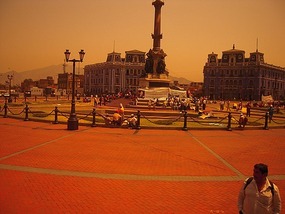
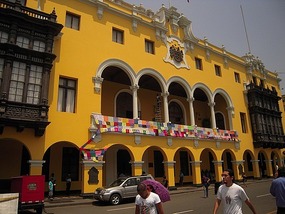













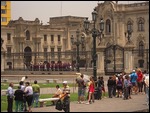
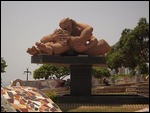
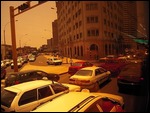
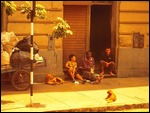
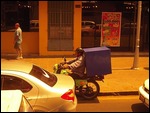
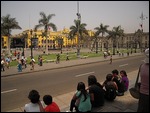
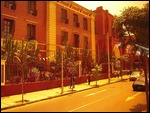
Barb
2011-01-22
I love the pictures showing the people and activities of the people. In Cuzco, I was told that the Spanish tore down many Inca buildings, but rebuilt on the foundations. Did you see any of that in Lima?
Marion Brown
2011-01-25
Barb,
According to the guide, Cuzco was the Inca capital, but the town of Rimac was not very big. It was more like the Oracle at Delphi, so there probably weren't very many Inca buildings there. They didn't mention any colonial buildings on Inca foundations.